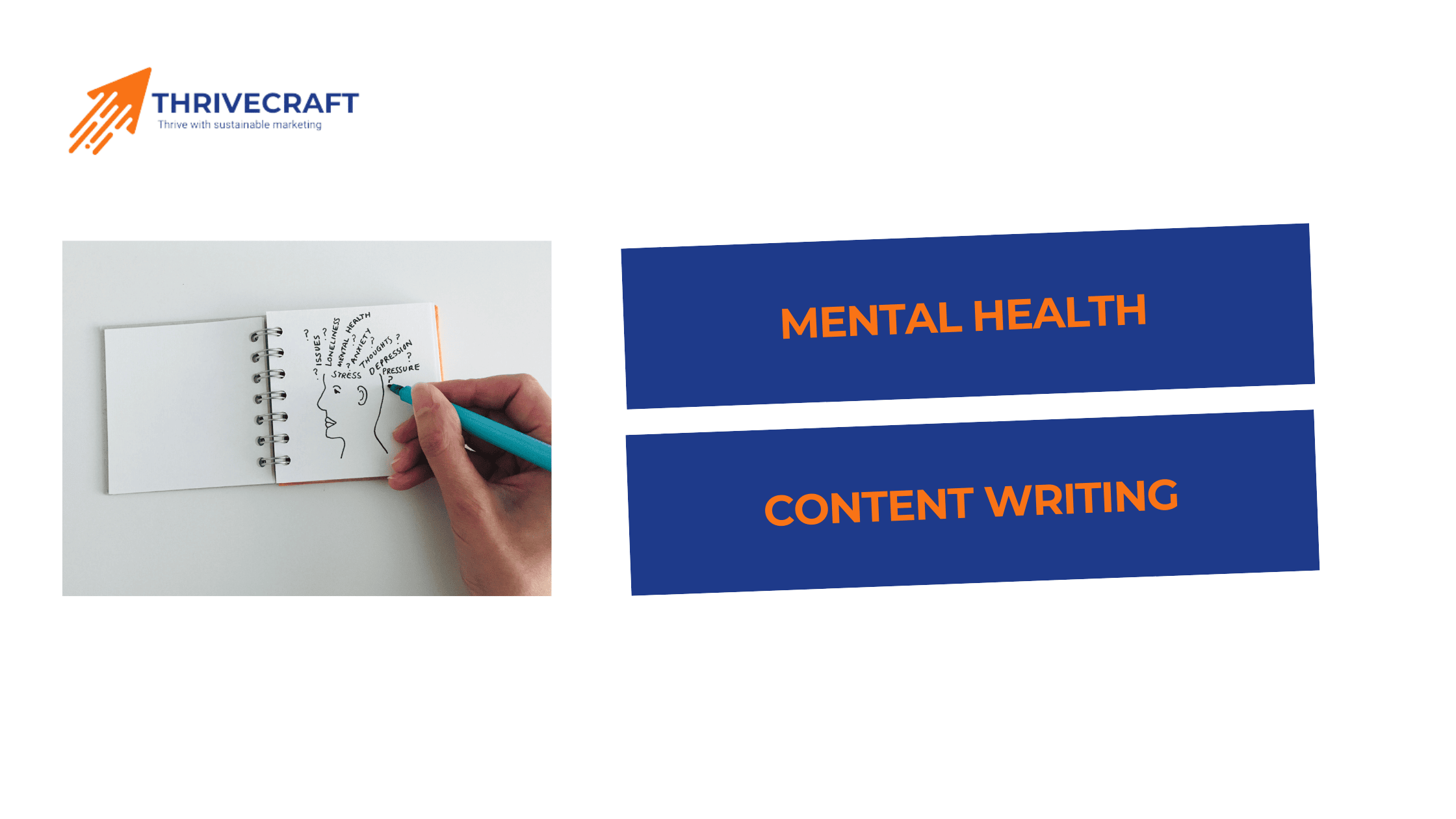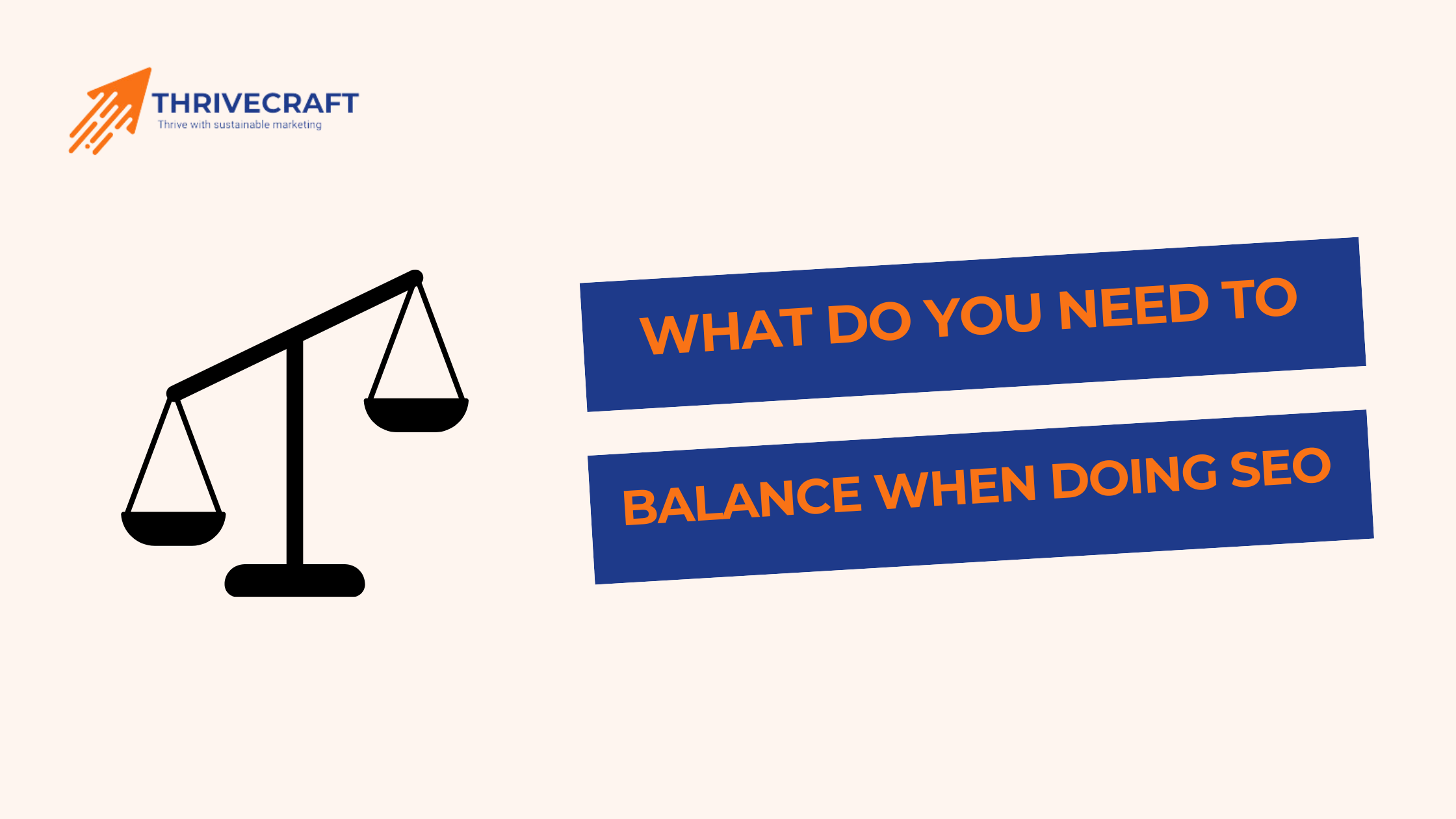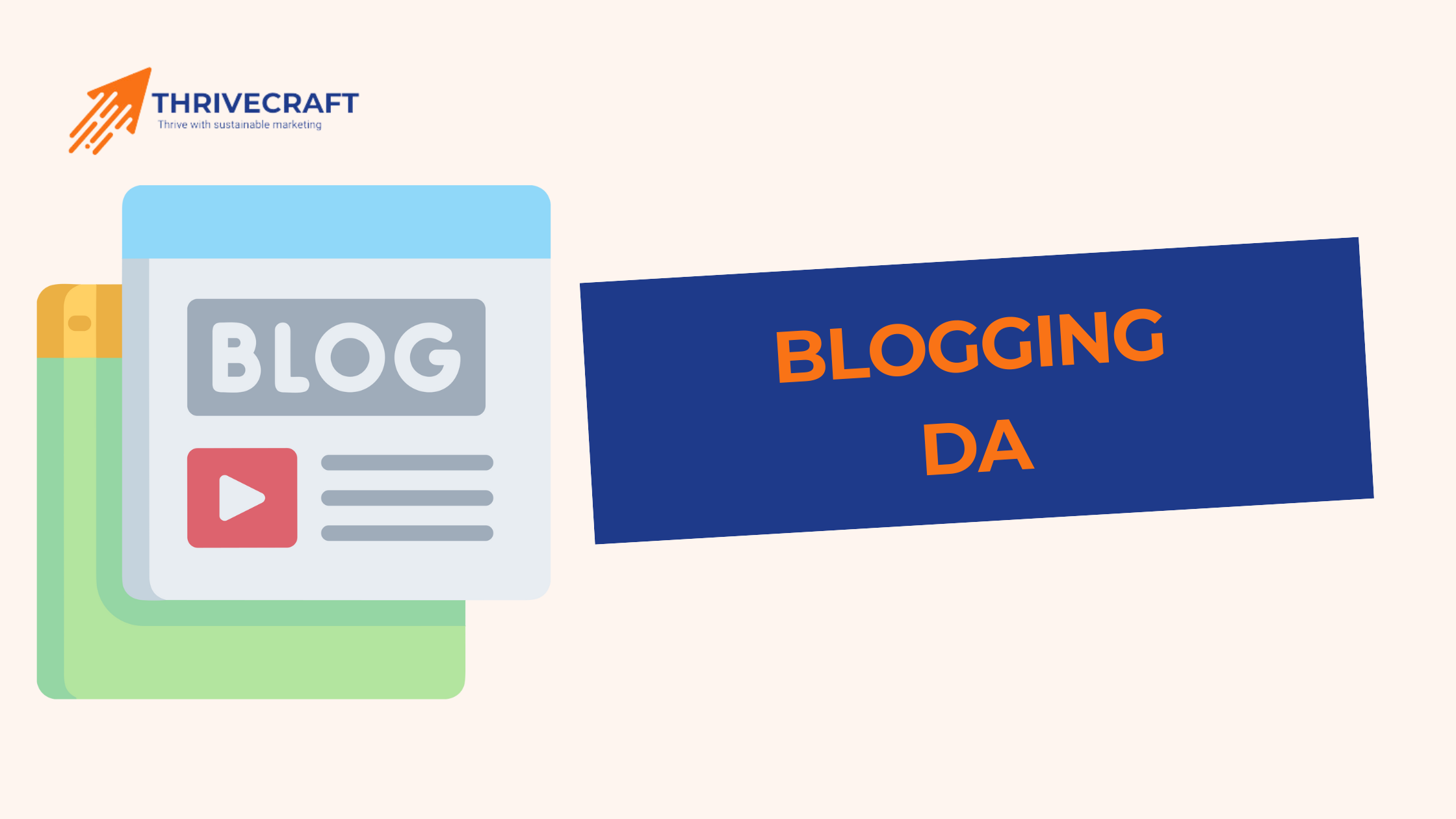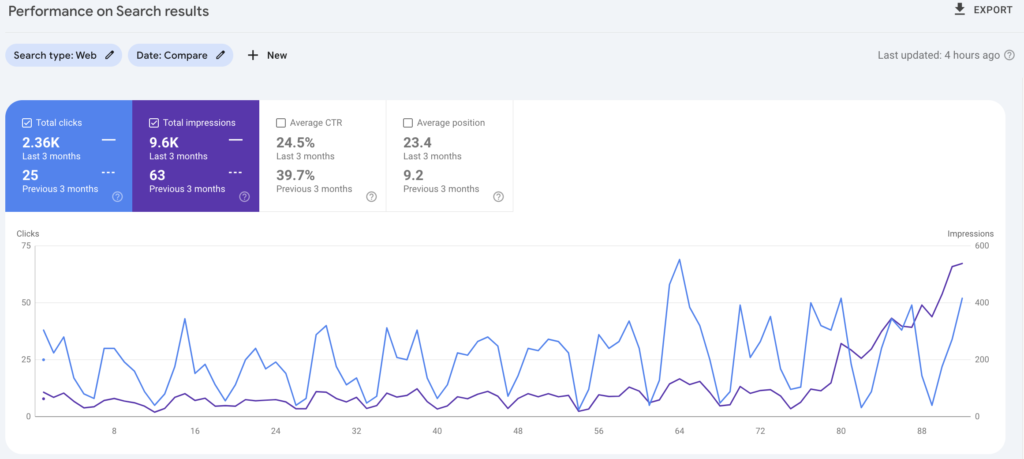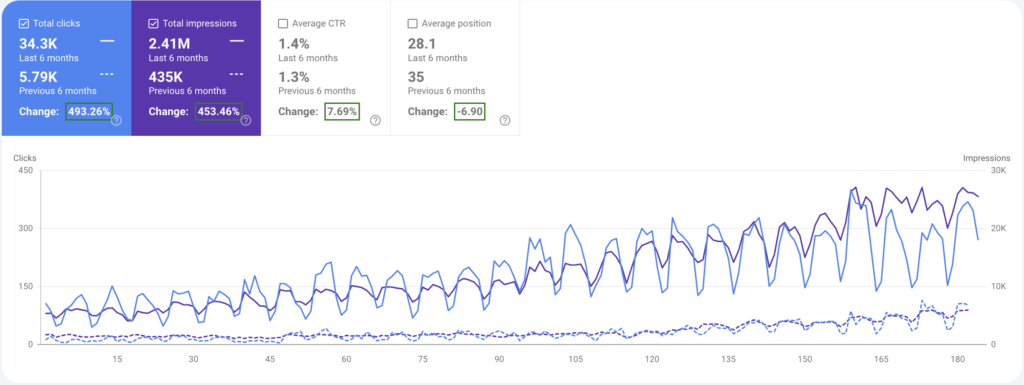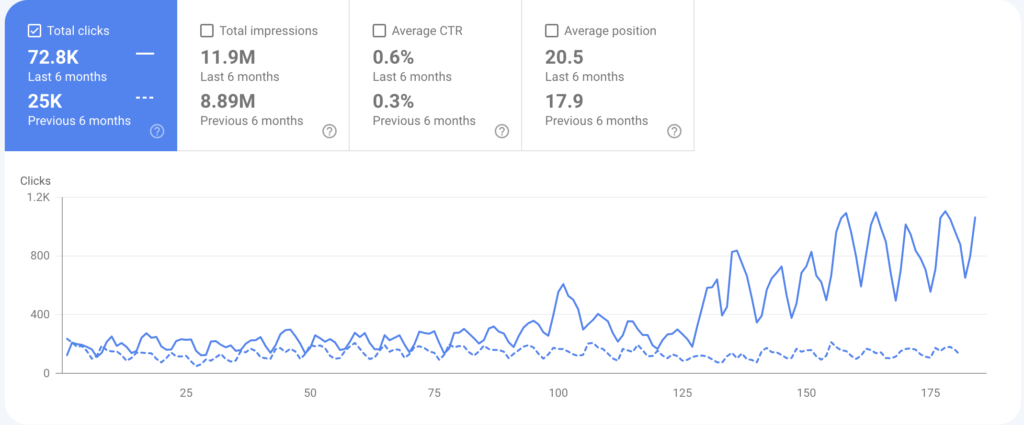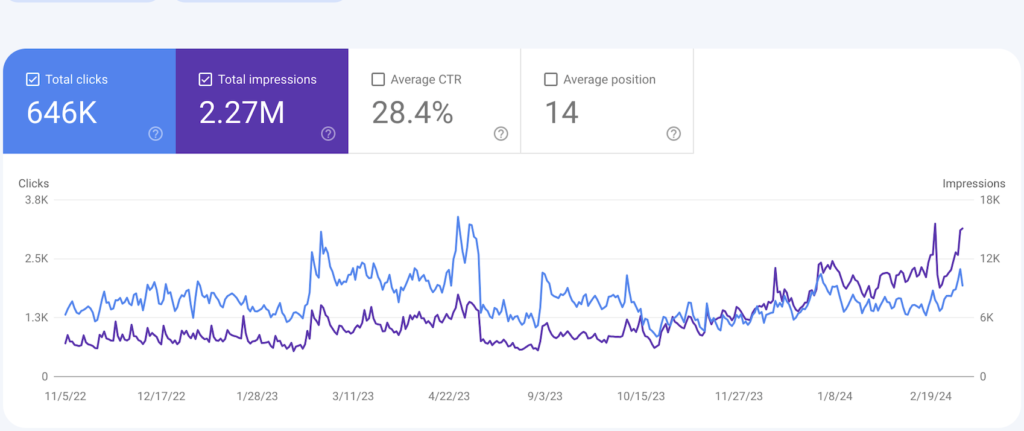Blogs and articles are vital in raising awareness, and people now rely more on online content. So, posting quality content accurately is crucial in the mental health niche to foster a connection. Whether it’s a blog, a story, or a simple tip, the right words can make someone feel heard, seen, and less alone.
It helps to reduce stigma and educate people. It encourages people to seek help and opens the door to honest conversations. It’s a way to share real experiences, spread practical advice and empower individuals to take steps toward healing.
The impact? A world where people feel supported, informed and part of a larger community that values mental well-being.
Want to create content that speaks to your audience on a deeper level? ThriveCraft SEO helps you do just that. We focus on creating thoughtful and engaging mental health content that genuinely connects.
Whether you need blogs, guides, social media posts or videos, we craft informative, compassionate and impactful content. Let’s work together to make your message resonate and support your audience in the best way possible.
Here, we have explored why creating meaningful, accurate, empathetic content is essential for mental health. We’ll examine its role in breaking down barriers, people’s comfort and positive change.
What is the Importance of Quality Content in Mental Health?
Quality content serves as an intermediary between understanding and action. It provides in-depth education, spreads awareness and provides peer support by bridging knowledge gaps and inspiring healthier conversations.
It is significant in mental health through its educational and informational steps. These aim to increase awareness about the various symptoms, causes, and treatment possibilities. They empower people to recognize early signs and seek help.
This content mainly contributes to fighting the stigma that prevents individuals from seeking help or discussing their struggles. By sharing stories about real experiences and genuine feelings, people can cultivate understanding and normalize their mental condition.
Content that openly discusses mental health can make individuals feel less isolated. Creating a sense of community and belonging for those who might otherwise feel alone in their struggles.
Basically, it provides immediate help or self-care that promotes mental health and well-being. Articles, guides and videos on coping mechanisms, stress management techniques and mindfulness practices can offer actionable steps to improve mental health.
When someone reads or watches something that resonates with their personal experience, it can be profoundly comforting and reassuring. Moreover, positive and empowering narratives have the potential to motivate individuals to take steps toward healing and self-care.
Such content can push for meaningful changes in mental health by highlighting systemic challenges, insights sharing and inspiring discussions. It can also encourage people to consult for themselves and others.
How to Understand the Audience for Mental Health Content
It is essential to understand the audience first to create an effective, engaging and meaningful conversation with the audience. It becomes crucial when someone wants to connect with a person to support their mental health.
We have presented a table to describe how we can understand our audience and what it requires.
| Aspect | Description | Examples |
| Demographics | Identify age, gender, cultural background, education level, and socio-economic status. | Teenagers dealing with academic stress vs. professionals managing workplace burnout. |
| Mental Health Challenges | Recognize specific concerns or pain points. | Anxiety, depression, trauma, or overall mental well-being improvement. |
| Empathy | Address the audience’s feelings with compassion and validation, avoiding judgment. | Use relatable, non-clinical language: “It’s okay to feel overwhelmed or burdened but You’re not alone.” |
| Preferred Formats | Choose content formats and platforms suited to the audience’s habits. | Short motivational videos for Instagram. Detailed blogs or webinars for older professionals. |
| Trust and Credibility | Build trust through expert opinions, evidence-based information and real-life testimonials. | Reference reputable organizations like WHO or include information from certified mental health experts. |
| Inclusivity | Ensure content reflects the diverse experiences of different identities and backgrounds. | Address unique challenges faced by individuals or cultural variations in mental health. |
| Adaptability | Continuously evaluate content performance and audience needs. | Use analytics to track engagement and adjust strategies based on trends and feedback. |
Always use structured planning to understand the audience for mental health content. By recognizing the challenges they face daily, content creators can offer them blogs or reels that resonate with them.
Steps to Create Content That Connects With Readers Emotionally
There is a systematic approach that includes many factors to create engaging content to connect with the readers emotionally. Here is the detailed guide that should be followed throughout the process.
Understand Your Audience & Choose Relatable Topics
A deeper understanding of your readers can help you better connect with them. Research their demographics, preferences, values, and challenges. Learn what affects them most and this will allow you to create content that resonates with their experiences and emotional states.
For example, focus on topics that reflect your audience’s experiences, struggles or aspirations. Readers are more likely to connect emotionally when they see themselves in the narrative. Use themes like failure overcome, let them find joy in small moments or managing stress can create a personal connection with your audience.
Use Storytelling Techniques
Share real-life anecdotes or case studies or create fictional scenarios that resonate with the reader’s life. Stories are powerful tools for emotional connection. Begin with a compelling introduction that sets the emotional tone and builds curiosity.
Use Sympathetic Tone
The tone of your content should reflect understanding and compassion. Avoid being overly technical. Instead, speak to the reader like a trusted friend or mentor. Use phrases that validate their feelings, such as “It’s okay to feel this way” or “You’re not alone in this journey.”
Evoke Specific Emotions with Visuals
Target emotions according to the audience, such as hope, nostalgia, joy or sympathy. Incorporate these with Images, videos and infographics. It can boost emotional connections. Visual storytelling adds depth and helps convey feelings that words alone may not capture.
Engage with Questions
Ask reflective questions that prompt readers to think about their emotions or experiences. Questions that encourage actions like sharing a personal story or practicing a positive habit.
It can connect with the audience profoundly and provoke them to participate. For example, “What’s one thing you’re grateful for today? Share it in the comments.”
Best Practices: SEO Optimization on Mental Health Blogs
Mental health blogs need a blend of technical and accurate approaches for optimization. Below are some best practices to make sure that your mental health content is discoverable and credible:
Incorporate Strategically Conduct Keyword Research
Identify keywords that resonate with the intent of your target audience while being empathetic and relevant. Use keyword research tools such as Google Keyword Planner, SEMrush or Ahrefs to find long-tail keywords related to mental health content.
For example, rather than searching for vague keywords like “mental health.” Consider more specific phrases such as “how to manage workplace anxiety.” Remember to search for popular, high-volume keywords to optimize your blogs.
Create Accurate and Informative Content
Well-researched mental health blogs should use reliable information. Avoid sensitive information or unverified claims. Structure your content after a proper content audit to answer common questions or offer practical tips. Include tips to help reduce stress or provide motivation.
Write Compelling, Keyword-Rich Titles and Meta Descriptions
Include primary keywords and evoke emotion in the titles and meta descriptions. For example:
Title: “10 Proven Strategies to Balance Work-Life”
Meta Description: Discover actionable tips to manage anxiety, build resilience and set a balanced life.
Make it reader-friendly. It should be under 160 characters, while the title should fit in 60 characters.
Optimize Headers & Subheadings
Descriptive, keyword-rich headings written in H1, H2, and H3 can help break the content into elaborative sections.
Use titles that keep the reader engaged, like “Practical Tips for Managing Stress.” This will improve the SEO structure and help users and search engines navigate your page more straightforwardly. Proper technical and content SEO structure improves reading and enhances search engine optimization.
Use a Conversational Tone
To balance the sensitivity, execute the task in a conversational and supportive tone to engage the audience. Avoid the clinical or comparative terms as they can alienate the audience. Balance the user’s intent against your SEO efforts to ensure that the content connects emotionally and does rank.
Optimize for Mobile Users
Blog content must be mobile-friendly, as many users access mental health content from smartphones. Use responsive design and audio-visuals to bring in a good user experience. Most of the indexing is now done for mobile-first on Google, make mobile access essential for your content.
Focus on E-A-T (Expertise, Authority and Trustworthiness)
Google ranks content demonstrating expertise, authority and trust, especially when the subject is sensitive, such as mental health. Let licensed professionals review your content or add quotes anywhere to give it credibility and an increase in Domain Authority.
Optimize for Local SEO
If your blog supports a local mental health clinic or service, you should incorporate some local SEO techniques. Use geographic phrases such as “mental health therapy in your city.” Optimize your business for Google My Business to improve local search engine results.
The above SEO practices ensure that your mental health blog appears in search engines. More importantly, they provide authentic value to your target audience. Impactful content creation in any sensitive niche requires balancing optimization and compassion.
How to Promote Mental Health Blogs
It requires a careful blend of sensitivity and outreach. It aims to be precise and sensitive to the delicate characteristics of the subject. Here are a few guidelines to market your mental health blogs:
Promote Your Blog on Social Media
Social media sites like Facebook, Instagram, Twitter and LinkedIn are fantastic ways to promote mental health blogs. Share snippets of your blog content, such as tips, quotes or questions, to encourage engagement.
For instance, include a relatable quote about stress management and a link to your blog. Use hashtags like #MentalHealthAwareness, #SelfCare or #Mindfulness to optimize visibility.
Work with Consultants and Health Advisors
Work with mental health advisors or consultants can help grow the reach of your blogs. They can promote your blog on their platform, guest blog or co-create content with you. Ensure they align with your values and talk to your readers in a manner that resonates with them.
Utilize Email Newsletters
Build an email list of subscribers interested in mental health topics. Send newsletters with synopses or highlights of your latest blog posts. Personalize the subject line and content to convey that you value them. Post-engaging titles like ‘5 Easy Ways to Manage Anxiety—Read Our Latest Blog!’ would work well.
Partner with Nonprofits and Organizations
Next, partner with mental health-related nonprofits, therapy centers or wellness organizations. They may feature your blog on their website, newsletter or social media. You could also participate in webinars or events they run and promote your blog as a resource.
Optimize for the Search Engines
Use SEO strategies to improve your blog’s ranking on Google. Focus on keywords related to mental health that your audience searches for. Ensure your blog titles, descriptions and content naturally include the keywords.
Be Updated About the Industry
Participate in mental health workshops and awareness events, or keep updated through videos of famous medical experts. Share your blog with attendees through printed brochures or a brief mention during networking.
The promotion of mental health blogs is really about building trust, value and meaningful engagement with your audience. These tactics can tremendously broaden the reach of your blog while making a significant difference.
| Read More: 20 Best SEO SaaS Tools that work efficiently and support every type of Content. |
Want to make a difference with your mental health content? Let ThriveCraft SEO help you tell your story in a way that builds trust, fosters connection and inspires action. Contact us today to learn more about our content solutions, and let us help you reach a vast health-seeking audience who needs your guidance. Creating meaningful, accurate, and empathetic content is essential for mental health!
Challenges and Opportunities in Writing About Mental Health
Mental health content is a meaningful venture presenting its challenges and opportunities. Awareness may fortify the spirit of the writing as it captures every reader’s mind, heart and soul.
Challenges in Writing On Mental Health
Some of the common challenges that come while writing on mental health topics.
Maintaining Sensitivity
When an Individual’s mental health is poorly interpreted, it can significantly harm or even make people disinterested who are reading. The writer must remember every helpful and kind information so they can move with a non-judgmental and empathizing tone.
Misinformation
Mental health content depends on competent resources. To prevent the spread of misjudgments, peer-reviewed studies or opinion pieces should be written by major experts in their fields. Of course, this part is time-consuming, but it is crucial for credibility.
SEO and Authenticity
While optimizing for search engines helps reach a larger audience, overloading content with keywords can reduce its emotional resonance. Writers must craft content that appeals to algorithms and readers needing genuine support.
Craft Content for Diverse Audiences
Mental health experiences vary greatly based on cultural, social, and individual factors. This creates the challenge of producing content that resonates with a broad audience while avoiding oversimplification.
Prevent Writing that Triggers Emotions
Some readers, while going through mental health-related material, find themselves caught in a trigger of emotions. In addition, the writer may propose disclaimers or different resources to contact if the reader requires more help or intends to find immediate professional help.
Staying Updated with Trends
The field of mental health changes and develops according to the research done. People’s approaches to life are based on the idea of something new. Writers must keep track of the ever-changing landscape to stay current and accurate.
Opportunities in Writing About Mental Health
Here are some opportunities you can grab while writing on mental health topics.
Raise Awareness and Reducing Stigma
It is beneficial to write about mental illness in an informed readership while asking for a change in the stigma. Through therapy, coping mechanisms or self-care, writers have the opportunity to lend their voices to the normalization of mental health conversations.
Provide Support and Resources
Well-written mental health content could be a lifesaver for readers seeking information, comfort or advice. Blogs, articles and stories can provide specific insights on coping methods or direct readers to seek professional help.
Connect With Readers Emotionally
Mental health writing usually speaks to audiences, which opens opportunities to gain trust and loyalty. Writers can resonate with their audience by building bonds through relatable stories or sharing insight.
Effective Advisory and Building a Community
Mental health content can inspire advisory and foster a sense of community among readers. By addressing shared struggles and successes, writers can help readers feel less alone and encourage them to support one another.
Collaboration With Specialists
Collaborate with therapists, psychologists or counselors can make mental health content more credible and comprehensive. This collaboration allows doctors to write featured content like interviews or Q&As.
Expand Reach Through Social Media
With the demand for online mental health information barely beginning, dissemination on a digital platform offers possibilities. Authors can use blogs, social media or video platforms to reach larger audiences worldwide.
Read more: Avoid these common SEO mistakes while implementing best practices.
What are the Ethical Considerations in Mental Health Writing
Mental health content writers should be responsible for providing respectful and accurate information. We provide ethical guidelines for crafting engaging and informative content that builds trust.
1. Avoid Disgraceful Language
Language holds the potential to shape perspectives in writing about mental illness. Stigmatizing or judgmental terms should not be used, which may produce negative stereotypes or further neglect from individuals facing mental health issues.
Try to Avoid Labeling, Use Empathic Language: Instead of a “schizophrenic person,” it’s better to use the term “a person living with schizophrenia.” In people-first language, the accent is placed on the individual, not the condition.
Be Sensitive to Tone: Nothing should be more important than mental health difficulties. Therefore, avoid terms like “crazy,” “insane,” or “mental breakdown.” Always use a sympathetic and professional tone.
Focus on Strength and Recovery: Instead of portraying overwhelmed mental health challenges, focus on empowering narratives that emphasize resilience, recovery, and the availability of help.
2. Provide Credible Resources and Hotlines
Mental health topics frequently involve sensitive matters which can make readers feel vulnerable or need assistance. Writers should offer practical solutions to support them.
Provide Trustworthy Resources: Include information from well-known organizations. Always obtain the data from trusted resources such as WHO, the Ministry of Health and Family Welfare, or local health services.
Don’t Offer Unqualified Advice: Don’t suggest anything unless it is authorized. Readers must be encouraged to seek help from someone who can give them individualized advice.
3. Respect Privacy and Anonymity When Sharing Stories
When personal stories or real examples are included in the content, it should respect the privacy and dignity of all individuals involved.
Obtain Formal Consent: If using someone’s story, ensure you have explicit permission to share it. Explain how the story will be presented and where it will be published.
Anonymous Details: If the person prefers to remain anonymous, remove identifiable information such as names, locations or specific circumstances.
Avoid Exploitation: Ensure the story is shared to inspire, educate or inform—not for sensationalism. Respect the narrative as a reflection of the person’s lived experience.
Conclusion
Ethical mental health writing requires compassion, accuracy and respect for the audience. By following crucial aspects and avoiding critical factors, writers can create content that educates, supports and empowers readers while upholding the highest ethical standards.
Are you still struggling to post quality mental health content for your audience? We understand the medical industry’s terminology and are intensive in providing content in the medical niche. We also offer customized SEO solutions that provide measurable results and strengthen your digital presence.
By choosing ThriveCraft SEO, you are investing in an expert team that has the motivation and innovative vision for your business success.
Our experts constantly innovate using the industry’s most advanced tools and research techniques. Our services cover every aspect of writing SEO-optimized content in any industry.
We provide deeper keyword exploration and technical audits to user-oriented content writing and high-impact link-building strategies. Choose ThriveCraft SEO to move faster towards your online success and realize that investing in Us is investing in you. The road to growth starts with getting in touch with us.
Frequently Asked Questions (FAQs):
What Are the Best Tools for Writing About Mental Health?
The best tools for writing about mental health include Grammarly for tone and grammar checks, Hemingway Editor for improving readability, and Miro for brainstorming ideas. Additionally, Google Scholar ensures access to credible sources, and Canva aids in creating visually engaging infographics.
How to Research Accurate Information on Mental Health?
To research accurate information on mental health, prioritize credible sources like government agencies like the National Institute of Mental Health (NIMH) and reputable health organizations and always check for author credentials
What Are the Ethical Guidelines for Mental Health Content Writing?
The four ethical principles, involving respect for autonomy, beneficence and non-maleficence, were constantly present in their ethical considerations.
Why Is Empathy Important in Mental Health Content Writing?
Empathy improves your ability to manage and respond to an emotional experience effectively.

